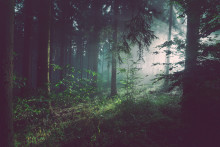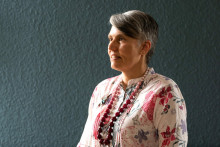Scientists from the University of Twente have been collecting measurements in the Veluwe, the largest forested area in the Netherlands, to see how trees react to climate change. The data collected between the 24th and 26th of July 2019 revealed something interesting. During these days, the forest actually emitted CO2.
‘Trees breathe just like us,’ explains Christiaan van der Tol, Associate Professor at the Water Resources department of ITC faculty. ‘They normally capture CO2 during the day and they release some CO2 at night. That is normal. However, during the heat wave the uptake during the day was very low, and so the trees actually released more CO2 at night than they captured during the day.’
'If this was standard behavior, it would be worrying'
Trees emitting CO2 sounds rather worrying. Should we be concerned? ‘If this was standard behavior, it would be worrying,’ answers Van der Tol. ‘But we are only talking about three days. We have to be careful not to overinterpret these measurements. Behavior of trees is not the same for all species. These measurements concern only Douglas fir, which is not native to the Netherlands. Other species might react differently to the temperatures. Moreover, we don’t know how the trees would respond if the heat lasted. This was the immediate response, but if the hot weather continued it is possible that the trees would adapt to the new conditions.’
‘Having this new data is very interesting, however,’ continues the UT researcher. ‘Now we know how trees react in these conditions and it helps us model what happens during a heat wave. And it can help forest managers to respond to a changing climate. For example, they might consider planting different tree species. The research continues, though. We want to pursue this further and see what happens in other parts of the forest. I’m now also looking at data from last year, when the summer was also very hot, to compare. This is not the end of the story.’







